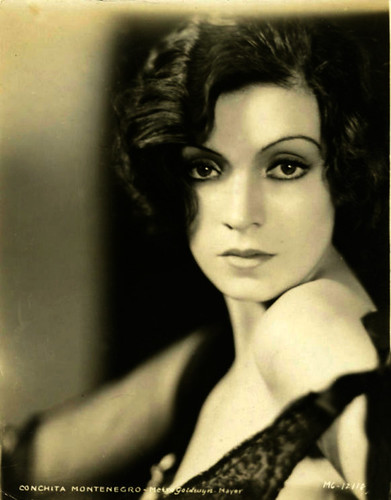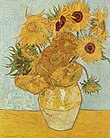
Vincent van Gogh‘s painting of “Père Tanguy” – done in what the French call Cloisonnism…
* * * *
 I’m taking a break from doing posts on politics. (As currently illustrated at right.) Instead, this post will be on painting, as in oil painting and/or acrylic painting. That’s what I do when I’m not working on my blogs.
I’m taking a break from doing posts on politics. (As currently illustrated at right.) Instead, this post will be on painting, as in oil painting and/or acrylic painting. That’s what I do when I’m not working on my blogs.
I recently skimmed through the book, Van Gogh (Gramercy Great Masters), and ran across this on page 25. It was about two paintings Van Gogh did in 1868:*
In the first of these, he used the technique of cloisonnism, the name of which was derived from a French word meaning “divided.” This approach was typical of [Paul] Gauguin, but was also used by many Symbolist painters, and consisted of surrounding every object with a distinct outline.
Anyway, the basic idea is – as noted – to “surround every object” in the painting “with a distinct outline.” And on the theme of great minds think alike, I thought to myself, “That’s what I’ve been doing!” Or at least that’s an idea I’ve developed in my recent painting.
I’m 66 and semi-retired, and so can now spend my time on things I enjoy doing, rather than things I have to do to make a living. I was a public defender for 24 years in Florida, but I was originally an art major. (For my bachelor’s degree.) But as graduation grew near I thought it would be better to major in something that would help me get a job. (Rather than, “You want fries with that?”) And ultimately I ended up in law school.
But I never totally gave up on my art. The problem? I wondered why my paintings always looked so blah, and – in the fullness of time – finally found out why. I never outlined anything, so all the objects in my paintings pretty much blended together.
 For example, if you look closely at Van Gogh’s “Portrait of Pere Tanguy” – at the top of the page -you’ll see that Père* is surrounded by bright red outline. Or – speaking of Paul Gauguin – you can see a much more exaggerated version in his The Yellow Christ (“one of the key works of Symbolism in painting.”)
For example, if you look closely at Van Gogh’s “Portrait of Pere Tanguy” – at the top of the page -you’ll see that Père* is surrounded by bright red outline. Or – speaking of Paul Gauguin – you can see a much more exaggerated version in his The Yellow Christ (“one of the key works of Symbolism in painting.”)
Gauguin relies heavily on bold lines to define his figures… The bold outlines and flatness of the forms in this painting are typical of the cloisonnist style.
And just as an aside, some sources say the word – “after the French for ‘partition'” – was a style of expressionism featuring large patches of bright color “enclosed within thick black outlines, in the manner of medieval cloisonné enamelling or stained glass.” Also, “The word ‘Cloisonnism’ is used interchangeably with the term ‘Synthetism,'” although artists “like Gauguin did not use the thick black outlines which are the hallmark of cloisonnist paintings.”
Whatever! (But only in the sense that “it’s about time this post came to an end.”)
So anyway, that’s what the French call Cloisonnism. Which leads me to say,”Boy, those French have a fancy name for everything.” Or as Professor Henry Higgins said in My Fair Lady, “The French don’t care what they do actually, as long as they pronounce it properly!”
Words of wisdom to live by…
* * * *

* * * *
The upper image is courtesy of Portrait of Père Tanguy – Wikipedia. Other sources – for paintings and text – include Cloisonnism: History, Characteristics – Art Encyclopedia, Artworks by style: Cloisonnism – WikiArt.org, Cloisonnism – Wikipedia, and 124 best Art – Cloisonnism images … Paul Gauguin.
“Note” also that an asterisk in the main text indicates a statement supported by a reference detailed further in this “notes” section. Thus as to the two paintings Van Gogh did in 1868: They were L’Arlésienne and Portrait of Armand Roulin. (One of several versions.)
Re: Père. According to Wiktionary, the term can mean either a “priest of the Roman Catholic Church, especially a French one,” or in the alternative the term is used “after a proper name that is common to a father and his son to indicate that the father is being referred to rather than the son; junior, fils.” See also Père | Definition … by Merriam-Webster.
The lower image is courtesy of Rex Harrison: Professor Henry Higgins – IMDb.






 That was by
That was by  Getting back to the theme of this
Getting back to the theme of this  Another guy who left a pretty good legacy…
Another guy who left a pretty good legacy…